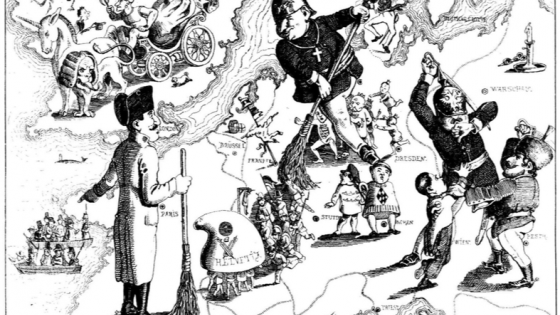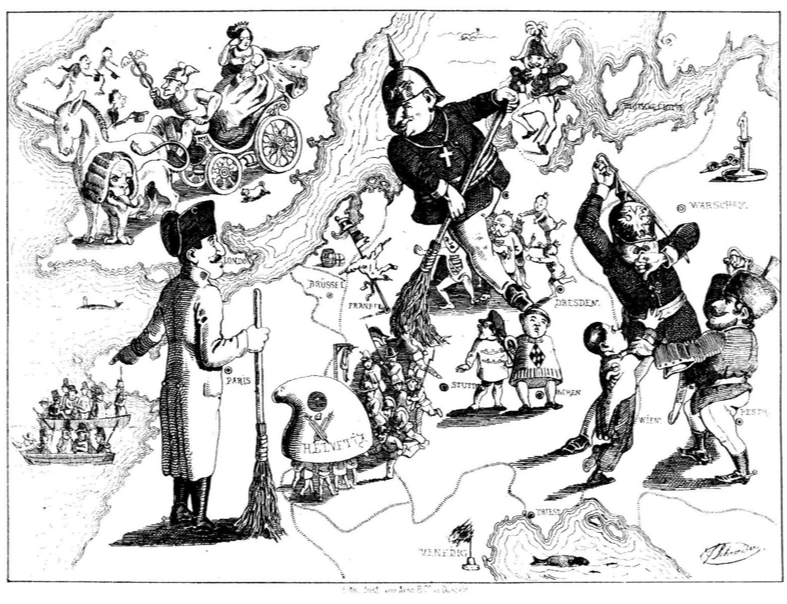A growing body of economic theory suggests that prominent individuals (‘leaders’) can play an important role in shaping history, by coordinating behaviours and beliefs in their social networks.1 The literature suggests a number of mechanisms. Leaders might convince others in their social networks of their own beliefs (Murphy and Shleifer 2004), norms of conformity could make other agents coordinate on their actions (Loeper et al. 2014), or the visibility of their actions could change the set of self-supporting beliefs and behaviours, i.e. the social norms, in society (Acemoglu and Jackson 2015). Key characteristics of leaders include persuasiveness, communication skills, resoluteness, and a willingness to lead by example (Hermalin 1998, Dewan and Myatt 2008, Lazear 2012, Bolton et al. 2012, Akerlof and Holden 2016).
While the literature makes compelling arguments for the importance of leaders, it is difficult to identify how they affect their social networks because of the well-understood ‘reflection problem’ (Manski 1993) – individuals that are seen as leaders may in fact just be prominent flag-bearers, rather than the causes of the changes occurring around them. As a result, there is a lack of well-identified empirical support for the hypothesis that individual leaders matter to the formation of beliefs and behaviours inside social networks.2
In a recent paper (Dippel and Heblich 2018), we explore a unique empirical setting to provide rigorous evidence of the impact that individual leaders can have on their social networks, and of the important role they can play in shaping the path of history. We study the effect of expelled leaders of the 1848-49 revolutions in German lands (the ‘Forty-Eighters’) on beliefs and behaviours in the US towns they settled in. This setting affords us three key advantages. First, by defining leaders ex ante we overcome the ‘reflection problem’. Second, by historical serendipity the egalitarian and pro-republican convictions that led to the expulsion of the Forty-Eighters from Europe mapped closely into the sectional political conflict around slavery that would come to a head in the US a decade later. This revived the Forty-Eighters’ spirit and engaged them in US politics. Third, the Forty-Eighters arrived at a time of temporary political quiet in the US, meaning their initial settlement choices were determined by economic rather than political considerations.
Figure 1 shows an 1849 political cartoon by Ferdinand Schroeder where the absolutistic rulers forced the revolutionary leaders to leave Europe and emigrate to the US after the failed revolutions.
Figure 1 Schroeder cartoon depicting the expulsion of the Forty-Eighters
To study the Forty-Eighters’ effect on the local communities where they settled, we perform our analysis at the level of towns, by constructing a geo-located 1850-1860 panel of over 10,000 Northern towns. To study a meaningful outcome that connects closely to the Forty-Eighters’ anti-slavery convictions and agitation, we constructed town-level rates of Union Army volunteering based on data for the over 2.2 million men who fought in the Union Army between 1861 and 1865 (Figure 2).
Figure 2 Map of Union Army enlistments (per hundred adult males)
We employ a variety of identification strategies to address potential endogeneity concerns surrounding the Forty-Eighters’ choice to settle in one town over another. Across these strategies, we estimate that towns where Forty-Eighters settled saw around ten more men per hundred adult males enlist over the course of the war, relative to a mean enlistment rate of 13%. Men in Forty-Eighter towns also enlisted earlier, consistent with the view that early enlistment cohorts had stronger anti-slavery convictions (McPherson 1997). We provide evidence that the Forty-Eighters influenced their social networks through their involvement in local social clubs and through anti-slavery treatises they published in print.
As an auxiliary exercise that buttresses our core results, we track those Forty-Eighters who enlisted in the Union Army and show that commanding officers reduced desertion rates in their companies, essentially replicating the setup in Costa and Kahn’s (2003) well-known study of Union Army desertion.
Lastly, we investigate the Forty-Eighters’ long-run effects on social norms in the towns they settled. As an outcome that connects closely to our main analysis, we study the formation of town-level chapters of the National Association for the Advancement of Colored People after 1900, and find that, other things equal, towns where Forty-Eighters settled were 30% more likely to have a local NAACP chapter in the 20th century.
Our core contribution is to provide rigorous empirical evidence of the impact that individual leaders can have on their social networks, and consequently the important role they can play in shaping the path of history. We show that individual leaders had a powerful effect on men’s choice to risk their lives in the Civil War, one of the most critical junctures in American history.
References
Acemoglu, D, and M O Jackson (2015), “History, expectations, and leadership in the evolution of social norms”, Review of Economic Studies, 82 (2), 423–456.
Akerlof, R, and R Holden (2016), “Movers and shakers”, The Quarterly Journal of Economics, 131 (4),1849–1874.
Bolton, P, M K Brunnermeier, and L Veldkamp (2012), “Leadership, coordination, and corporate culture,” Review of Economic Studies, 80 (2), 512–537.
Bertrand, M and A Schoar (2003), “Managing with Style: The Effect of Managers on Firm Policies”, Quarterly Journal of Economics, 118 (4).
Costa, D L, and M E Kahn (2003), “Cowards and Heroes: Group Loyalty in the American Civil War”, Quarterly Journal of Economics, 118 (2), 519–548.
Dewan, T, and D Myatt (2008), “The Qualities of Leadership: Direction, Communication, and Obfuscation”, American Political Science Review, 102 (3), 351–368.
Dippel, C, and s Heblich (2018), “Leadership in Social Networks: Evidence from the Forty-Eighters in the Civil War”, NBER working paper 24656.
Jones, B F, and B A Olken (2005), “Do Leaders Matter? National Leadership and Growth Since World War II,” Quarterly Journal of Economics, 120 (3), 835–864.
Hermalin, B E (1998), “Toward an economic theory of leadership: Leading by example”, American Economic Review, 1188–1206.
Lazear, E P (2012), “Leadership: A personnel economics approach,” Labour Economics, 19 (1), 92–101.
Loeper, A, J Steiner, and C Stewart (2014), “Influential Opinion Leaders”, Economic Journal, 124 (581), 1147–1167.
Manski, C F (1993), “Identification of endogenous social effects: The reflection problem”, Review of Economic Studies, 60 (3), 531–542.
McPherson, J M (1997), For Cause and Comrades: Why Men Fought in the Civil War, Oxford University Press.
Murphy, K M, and A Shleifer (2004), “Persuasion in Politics”, American Economic Review, 94 (2), 435–439.
Endnotes
[1] The idea that individuals matter in history is of course not new, having been around outside of economics since antiquity. However, ‘great man’ approaches to history lack the micro-foundations that can explain leadership as anything other than formal control over institutions, the government, or the army.
[2] This is in contrast to well-established empirical evidence that leaders matter in the context of organizations or institutions (Bertrand and Schoar 2003, Jones and Olken 2005).




